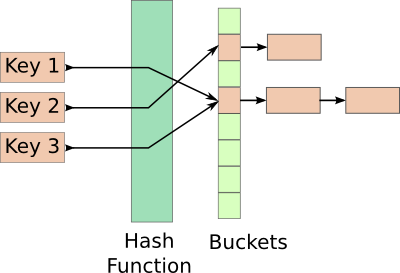在面試時,如果順利解完白板題了,面試官可能會接著問:
“這樣的時間複雜度是多少?”
“還能更快嗎?”

所以,我們試著從簡單的問題來學習如何分析時間複雜度xD
Time complexity

試圖用個不嚴謹的方法來理解他,想像有一個計數變數count = 0在你的程式裡
每執行一次你的程式count就會+1,請問執行完後count會等於多少?
- 這!就是時間複雜度
接下來考慮幾個Case:
variable assign: $O(1)$
1
2x = 0
count += 1loop: O(N)
1
2for _ in range(N):
count += 1nested loop(2 level): $O(N^2)$
1
2
3for _ in range(N):
for _ in range(N):
count += 1nested loop(2 level) + loop: $O(N) + O(N^2) \rightarrow O(N^2)$
- upper bound
1
2
3
4
5for _ in range(N):
for _ in range(N):
count += 1
for _ in range(N):
count += 1
- upper bound
常見的還有sort通常時間複雜度為O(NlogN)、tree-based recursive的時間複雜度為O(2^N)…不過大概有個概念就好
接下來進到本週Leetcode,來探討不同解法的時間複雜度,以及他們對於效能上的差異
LeetCode 1. Two Sum
Soultion 1. double loop
Given an array of integers, return indices of the two numbers such that they add up to a specific target.
You may assume that each input would have exactly one solution, and you may not use the same element twice.
這題要返回index,所以不應該對list做任何變動
1 | class Solution: |
時間複雜度: $O(N^2)$
1 | Runtime: 6196 ms, faster than 5.34% of Python3 online submissions for Two Sum. |
Solution 2. Dict(hash table)
先把所有的值跟index都記錄下來,然後掃一次list,如果紀錄中存在target - nums[i],則這就是一組解
1 | class Solution: |
時間複雜度: $O(N)$
1 | Runtime: 44 ms, faster than 91.83% of Python3 online submissions for Two Sum. |
python的dictionary: hash table?
這裡用到了一個資料結構: dictionary,或者,在其他語言裡面稱作hash table
查詢最快可以是$O(1)$
怎麼做到的?
- 空間換時間
- 透過一個hash function把data轉換成index,然後存到array[index]上

如果array[index]上已經有資料?
- 在該位置上串linked list
- 之後在linked list上搜尋就需要遍歷一次list
- 好的hash function很重要,考慮以下hash function:
F(data)=0,也就是任意的資料都給予0的index,此時hash table查找的時間複雜度就會變O(N)- 因為等同於在一個linked list上查找
結論:
- python dict()背後用到的資料結構是hash table,查找時間複雜度通常是$O(1)$
類似題型
15. 3Sum
Given an array nums of n integers, are there elements a, b, c in nums such that a + b + c = 0? Find all unique triplets in the array which gives the sum of zero.
- 這題不是要回傳index,而是要回傳可以湊到0的數字集合
18. 4Sum
Given an array nums of n integers and an integer target, are there elements a, b, c, and d in nums such that a + b + c + d = target? Find all unique quadruplets in the array which gives the sum of target.
- 這題不是要回傳index,而是要回傳可以湊到target的數字集合
總結
針對不同情境、應用使用不同的資料結構、演算法能夠大大提升效能
簡單的針對程式來分析時間複雜度是個還不錯的好習慣
- 不過Python提供太多lib了,有時候有些東西不好分析,就大概有個概念就好
